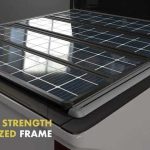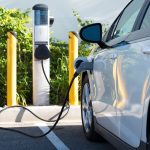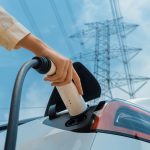Imagine having a power plant that can follow you anywhere. To a remote film set under the vast desert sky, a disaster relief zone where the grid is just a memory, or a quiet corner of a national park where your only neighbors are the pines. That’s the promise—no, the reality—of truck-mounted renewable energy systems. They’re turning heavy-duty vehicles into self-sufficient, mobile power stations.
This isn’t just a niche idea anymore. As the demand for clean, resilient power grows across industries, these rolling energy solutions are hitting the road in a big way. Let’s dive into how they work, what makes them so compelling, and honestly, how they’re changing the game for people who need serious power far from a traditional outlet.
Why Go Mobile with Your Power?
Well, the old way of doing things—relying on loud, fume-belching diesel generators—has some serious drawbacks. The fuel costs are unpredictable. The noise can be unbearable on a long job. And the environmental impact? Let’s just say it doesn’t exactly align with modern sustainability goals.
Truck-mounted renewable systems flip the script. They offer what you might call energy autonomy. You’re free from fuel supply chains and the constant, draining hum of a generator. For industries like construction, mining, and event management, this isn’t just a nice-to-have; it’s a strategic advantage that cuts costs and carbon footprints simultaneously.
The Core Components: Your Power Plant on Wheels
So, what exactly goes into one of these setups? It’s a brilliant, and honestly, a beautifully simple integration of proven technologies. Think of it as a symphony of components working in harmony.
The Power Generators: Solar and Wind
The most common setup features solar panels, and for good reason. They’re reliable, silent, and increasingly efficient. We’re not talking about a couple of small panels here, either. These are often heavy-duty, folding arrays or even track-mounted systems that can deploy from the truck bed or a custom trailer, capturing maximum sunlight.
But what about when the sun isn’t shining? That’s where wind turbines come in. A compact, vertical-axis turbine can be mounted on the truck and start generating power with just a slight breeze. It’s the perfect complement to solar, especially in cloudy or windy regions. A hybrid solar-wind system ensures you’re rarely without a source of energy.
The Beating Heart: Batteries and Inverters
All that generated energy needs a home. That’s the battery bank’s job. Lithium-ion batteries are the star here—they’re lighter, more compact, and have a longer lifespan than their lead-acid predecessors. They store the DC (Direct Current) power from the sun and wind.
But most of our tools and equipment run on AC (Alternating Current). Enter the inverter. This crucial piece of tech converts the stored DC power into usable AC power, effectively creating a mobile, clean-energy wall outlet. A high-capacity, pure sine wave inverter is key for running sensitive electronics without a hitch.
Real-World Applications: Where These Systems Shine
This technology isn’t just theoretical. It’s solving real problems right now. Here are a few places you’re likely to find these mobile power hubs.
- Emergency and Disaster Response: When the grid goes down after a hurricane or earthquake, time is critical. A truck-mounted system can roll in and immediately provide power for communications, medical equipment, and lighting, without waiting for fuel deliveries.
- Remote Construction and Mining Sites: Setting up temporary power for tools, site offices, and lighting in a new location is a huge expense. A renewable system eliminates ongoing fuel costs and the logistical nightmare of keeping generators running.
- Film and Media Production: On location, noise is the enemy. The ability to power cameras, sound equipment, and catering with a silent, zero-emission source is a game-changer for film crews.
- Agricultural Operations: From powering electric fencing and irrigation systems to providing energy for remote barns and storage facilities, these systems offer farmers true energy independence.
Weighing the Pros and Cons
Like any technology, it’s not all sunshine and gentle breezes. Here’s a straightforward look at the trade-offs.
| Advantages | Challenges |
| Zero fuel costs & low operating expenses | High initial investment and setup cost |
| Silent, fume-free operation | Power generation is weather-dependent |
| Reduced carbon footprint and emissions | Limited energy storage capacity (battery constraint) |
| Enhanced mobility and rapid deployment | Requires some technical knowledge for maintenance |
| Minimal maintenance compared to generators | Vehicle weight and space are significant factors |
That said, the long-term savings on fuel alone can often justify the upfront cost for many businesses. It’s an investment in predictability.
Designing Your System: Key Considerations
You can’t just bolt some panels to a pickup truck and call it a day. A well-designed system requires careful planning. Here’s a quick, step-by-step thought process.
- Audit Your Power Needs: List every single device you need to run and for how long. Calculate your total daily watt-hour consumption. This is your most important number.
- Choose Your Energy Mix: Will you rely solely on solar, or add a wind turbine for a hybrid approach? Consider your typical operating environment.
- Size Your Battery Bank: Your battery capacity must meet or exceed your daily power needs, with a little extra buffer for, you know, a cloudy day.
- Select the Right Inverter: Make sure its wattage rating can handle the startup surge of your largest tool (like a saw or water pump).
- Don’t Forget the Truck Itself: The vehicle’s payload capacity, roof space, and structural integrity are paramount. This is a job for a professional fabricator.
The Road Ahead for Mobile Renewable Power
We’re on the cusp of even more exciting developments. Battery technology is improving at a breakneck pace, promising more storage in less space and for a lower cost. Some innovators are even exploring small-scale, truck-mounted kinetic energy recovery systems that generate power from the vehicle’s own movement.
The convergence of mobile power and electric vehicles is another fascinating frontier. Imagine an electric truck that not only hauls equipment but also serves as the primary battery storage for its own renewable power generation system. It’s a completely closed-loop, sustainable workhorse.
In the end, truck-mounted renewable energy isn’t just about technology. It’s about a shift in mindset. It’s about untethering ourselves from the grid and from fossil fuels, and taking control of our power needs. It’s a declaration of independence that rolls on wheels, powered by the sun and the wind. And that, honestly, is a powerful thought.











